
|
Astronomy Picture Of the Day (APOD)
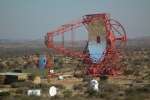 High Energy Stereoscopic System II
High Energy Stereoscopic System II
27.07.2012
The largest of its kind, the High Energy Stereoscopic System (H.E.S.S.) II telescope stands in the foreground of this photo. Tilted horizontally it reflects the inverted landscape of the Namibian desert in a segmented mirror 24 meters wide and 32 meters tall, equal in area to two tennis courts.
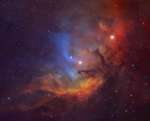 The Tulip in the Swan
The Tulip in the Swan
26.07.2012
Framing a bright emission region this telescopic view looks out along the plane of our Milky Way Galaxy toward the nebula rich constellation Cygnus the Swan. Popularly called the Tulip Nebula the glowing cloud of interstellar gas and dust is also found in the 1959 catalog by astronomer Stewart Sharpless as Sh2-101.
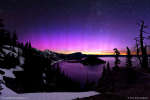 Pink Aurora Over Crater Lake
Pink Aurora Over Crater Lake
25.07.2012
Why is this aurora strikingly pink? When photographing picturesque Crater Lake in Oregon, USA last month, the background sky lit up with auroras of unusual colors. Although much is known about the physical mechanisms that create auroras, accurately predicting the occurrence and colors of auroras remains a topic of investigation.
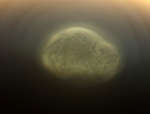 South Polar Vortex Discovered on Titan
South Polar Vortex Discovered on Titan
24.07.2012
What's happening over the south pole of Titan? A vortex of haze appears to be forming, although no one is sure why. The above natural-color image shows the light-colored feature. The vortex was found on images taken last month when the robotic Cassini spacecraft flew by the unusual atmosphere-shrouded moon of Saturn.
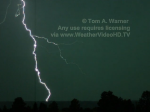 Lightning Captured at 7207 Images per Second
Lightning Captured at 7207 Images per Second
23.07.2012
How fast is lightning? Lightning, in fact, moves not only too fast for humans to see, but so fast that humans can't even tell which direction it is moving. The above lightning stroke did not move too fast, however, for this extremely high time resolution video to resolve.
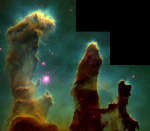 M16: Pillars of Creation
M16: Pillars of Creation
22.07.2012
It was one of the most famous images of the 1990s. This image, taken with the Hubble Space Telescope in 1995, shows evaporating gaseous globules (EGGs) emerging from pillars of molecular hydrogen gas and dust. The giant pillars are light years in length and are so dense that interior gas contracts gravitationally to form stars.
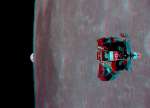 The Eagle Rises
The Eagle Rises
21.07.2012
Get out your red/blue glasses and check out this remarkable stereo view from lunar orbit. Created from two photographs (AS11-44-6633, AS11-44-6634) taken by astronaut Michael Collins during the 1969 Apollo 11 mission...
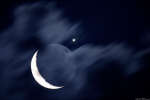 Moon Meets Jupiter
Moon Meets Jupiter
20.07.2012
Skygazers around planet Earth enjoyed the close encounter of planets and Moon in July 15's predawn skies. And while many saw bright Jupiter next to the slender, waning crescent, Europeans also...
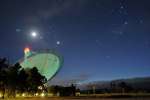 Dawn of the Dish
Dawn of the Dish
19.07.2012
Wandering planets Venus and Jupiter were joined by an old crescent Moon near the eastern horizon on July 15. This serene southern skyview of the much anticipated predawn conjunction includes the lovely Pleiades star cluster and bright stars Aldebaran and Betelgeuse in the celestial lineup.
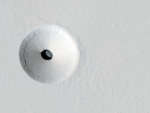 A Hole in Mars
A Hole in Mars
18.07.2012
What created this unusual hole in Mars? The hole was discovered by chance on images of the dusty slopes of Mars' Pavonis Mons volcano taken by the HiRISE instrument aboard the robotic Mars Reconnaissance Orbiter currently circling Mars. The hole appears to be an opening to an underground cavern, partly illuminated on the image right.
|
January February March April May June July August September October November December |
|||||||||||||||||||||||||||||||||||||||||||||||||